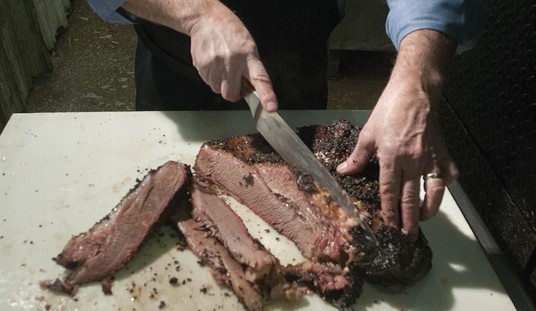Sitka, Alaska, a charming and picturesque town along Alaska’s Inside Passage, still has a few vestiges of when it was once the proud capital of Russian America, the name given to the Russian colonies in the Americas from 1733 to 1867. Russia took possession of all of what is now Alaska in the mid 18th century. Sitka itself, originally called Archangel, was founded in 1808 as the capital of Russian America and at one time Russian officers and their ladies danced the night away in Sitka homes.
In the late 19th century the U.S. Congress voted to purchase the Russian territory by only one positive vote. It was Secretary of State William Seward* who had pushed to buy the land, which cost the U.S. seven million dollars, or two cents an acre, in 1867. He was widely derided for this and the purchase was termed “Seward’s folly” and “Seward’s icebox.”
Subsequent years have shown what a fantastic purchase it has been and Alaska has proven itself to be one of our richest areas in natural resources, and the purchase one of the U.S.’s best deals. You can still see remnants of the Russian influence, which include the Russian Blockhouse, the Russian Bishop’s House, and Princess Maksoutoff’s Grave and Castle Hill, all of which date back to the Russian era. There are 22 buildings in Sitka on the National Register of Historic Places, all of which can be visited on the city’s walking tour.
The Russian Bishop’s House is furnished much as it was when the Russian Orthodox bishops lived there. One of its highlights is a magnificent ornately gilded private chapel. The rest of the mansion is decorated in a more subdued tone. The house has innovations in heating that were probably the most modern of the time. The cathedral is smaller, but its onion dome is the highlight of the town’s skyline. Though small, it’s still quite impressive.
Sitkans are proud of their town’s Russian heritage and you can even buy souvenirs that remind you of Russia. You might even be able to pick up a samovar here. I bought an ermine key chain in town from a Russian furrier. Sitka is a big stop on the cruise ship route. One storekeeper told of some of these tourists asking him if storekeepers took American money in Sitka. He was also asked if they could use American stamps to mail letters in Sitka!
Sitkans are also proud of their new Centennial Hall, where you can watch the Archangel dance troupe performing authentic Russian dances using actual Russian costuming, music, and instruments. They give a very lively and foot-stomping performance. For more music, visit during the time of the Sitka Summer Music Festival.
Sitka itself is in the heart of a luxuriant natural setting on Baranof Island, named after Alexander Baranov, who was influential in Russian America and was its first governor. The town is surrounded by rainforest and lovely elevations with seven state park units including four maritime parks, one over 1,000 acres large. There’s even a one acre park called Castle Hill in the center of town. Sitka borders the Pacific and offers fantastic fishing opportunities, as does most of the Inside Passage. Many U.S. fishermen from the country’s mainland come here just to fish — the halibut can be as big as 400 pounds. If you visit, try the succulent Alaskan salmon. Alaskans love their salmon bakes, which offer one pound salmon steaks with corn meal muffins.
Hike into the Tongass National Forest, which is on the edge of Sitka, and also runs along much of the Inside Passage. It has pure, clear bubbling streams and is thick with verdant trees. Some say you might even sight an Alaskan bear there. The area offers a culinary delight, wild cloudberries, which are easy to pick and delightful to eat. They resemble pale salmon-colored blackberries.
The Sitka National Historical Park is dotted with towering totem poles created by the Alaskan natives, the Tlingit and Haida. Some of Sitka’s museums offer great background displays of the native Alaskan cultures, like the Sheldon Jackson Museum.
Sitka, as is most of Alaska, is a great place for outdoor adventure. You can go whale watching here — in fact, there’s even a whale watching event in November; take a glass-bottom boat to see underwater as well as above the water; go kayaking; take a bird watching cruise; or take a boat to St. Lazaria to see 1500 pairs of mating puffins! Check out the Fortress of the Bear, which is a habitat for orphaned brown bears, and the Alaska Raptor Center, which treats injured birds and then releases them into the wild.
The majority of the towns along Alaska’s Inside Passage are small, with the largest being Alaska’s capital city of Juneau. Sitka itself has about nine thousand people and the only way to get to it is by boat or airplane. A really different way to get there is via the Alaska ferry, which is much cheaper than a cruise ship. You can even sleep on deck on the ferries. Dining is often with cafeteria-style food offerings. The ferries stop at all the little ports along the way and you can get off and explore some of them. Each ferry is different and each has its own personality. Some are even posh and a few might be a bit spartan. You can go farther north to Haines, the last stop on the Alaska ferry, or south to Bellingham in the state of Washington, where the ferry originates on the mainland.
Sitka is a great place to get a sampling of Russian and native Alaskan culture, enjoy active adventures in the great Alaskan outdoors, and have a lot of fun in doing so.
* An earlier version of this article stated erroneously that William Seward was secretary of the Interior.










Join the conversation as a VIP Member